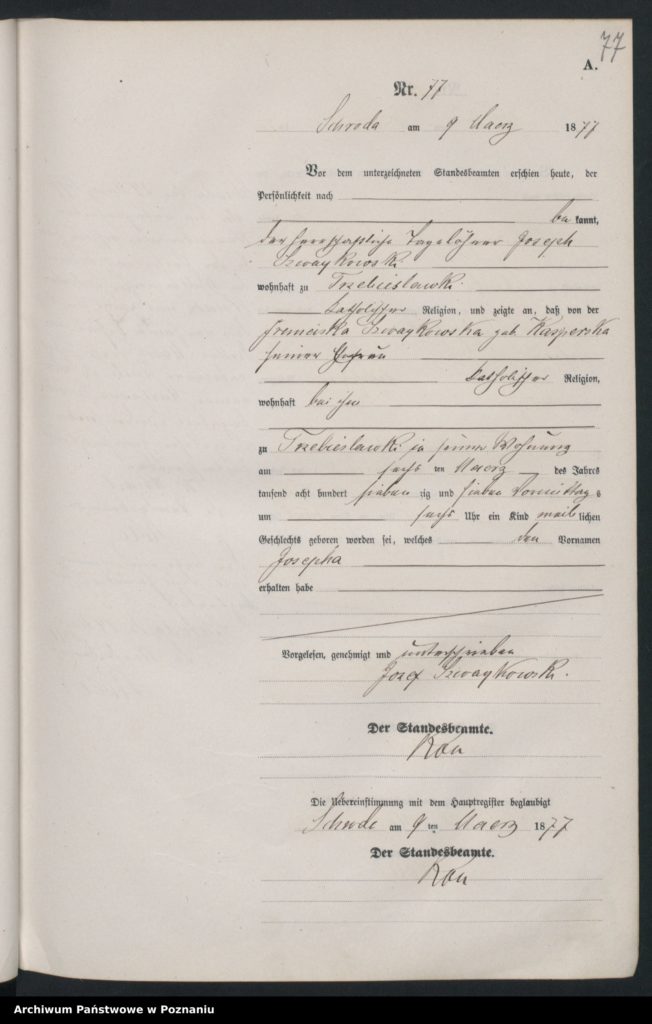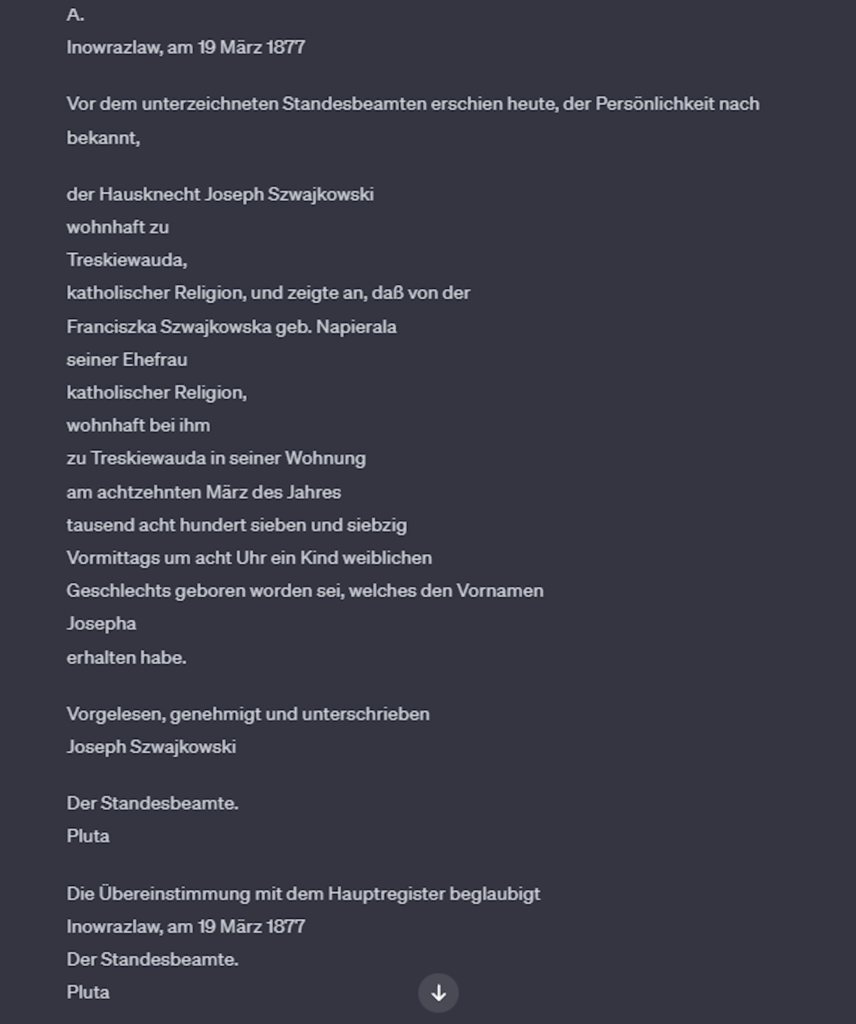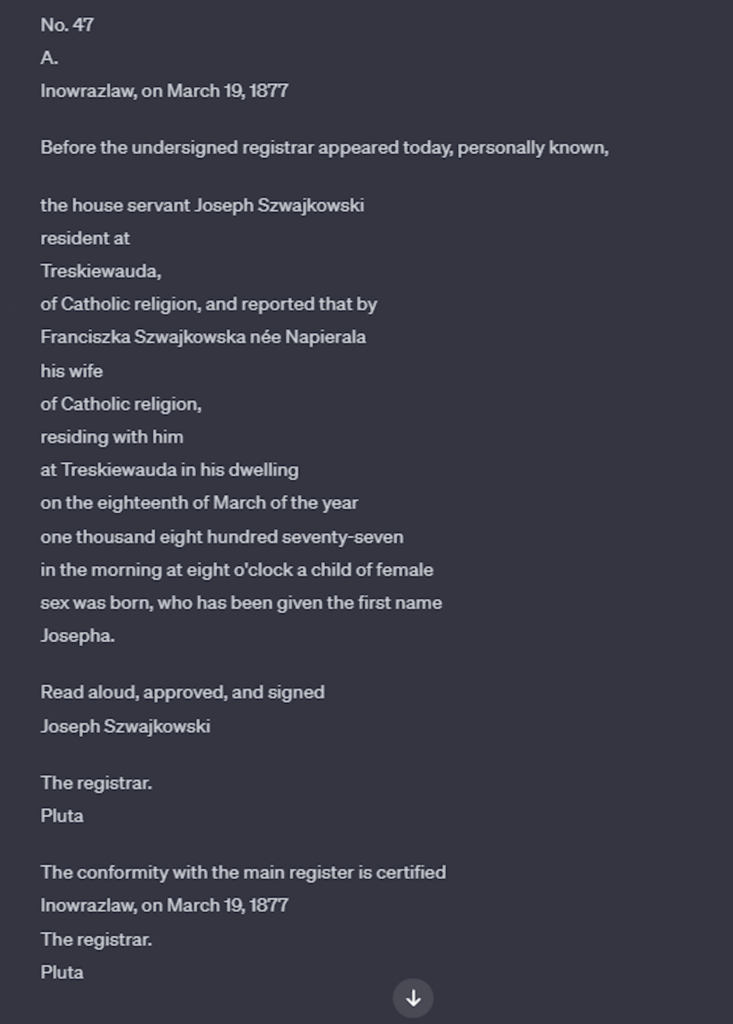Recently I tried using ChatGPT to transcribe the German birth record for my great grandmother. I don’t know the German language so figuring out what these records say has always been a challenge for me. A few years back I tried translating it myself and thought I had managed to extract the data I needed which was confirmation of the names of her parents and her birth date and place. But ChatGPT’s transcription, while not perfect, made me realize I might have missed something important about this record I didn’t realize at the time of my initial translation. Below is a copy of the original record:

Here is the prompt I used to ask ChatGPT 4 to transcribe an image of this document:
Hello, you are a master genealogist who is proficient at both english and german including reading old german script and birth registration records. Can you please transcribe the attached birth record which includes both typed and hand written German words?
Below is a result of the transcription:

One thing I noticed right away is that it transcribed the numeral “9” in the date to a “19.” I am not sure why it did this as I would think a number would be fairly easy to recognize. But the next key thing I noticed is that I may have mistakenly translated initially on my own as if the handwritten and typed words used the same German font which I assumed at the time to be Fraktur. Although back then I did realize the names seemed to use the English or Latin font. What made me now understand I may have not caught the change in the German font is I started to compare the written words to the transcription and noticed some of the words if transcribed correctly must be written in what I believe is the Kurrent font.
So looking again at the date of birth which is a key piece of data for me and now realizing it is in the Kurrent font, I could tell she was born on March 6th. However, it is again interesting that ChatGPT didn’t transcribe the number part of the date correctly and instead of sechs (six), it transcribed the number as “achtzehn” (eighteen) and connected it to the typed word “ten.” There are a few other words it may have not transcribed correctly which then led to an incorrect translation. Below is the result of me asking ChatGPT to translate its transcription.

Even with the few mistakes, just the exercise of doing this helped me figure out where i had gone wrong initially by translating the birthdate to be five which is 𝔣𝔲𝔫𝔣 in Fraktur. The number five in Fraktur in the German language does look similar to six in Kurrent which you can see in the original document above, but there are some differences I had not caught. It also made me realize I may have been prejudiced in my translation as her birthdate on at least one document i have is March 4th which would have only been one day off a date of March 5th.
This experience made me realize having ChatGPT transcribe/translate documents can provide good insight into the record even if ChatGPT might not perform the task perfectly. For me, at least right now, working together with ChatGPT is just like working with a team at my job – we all bring our skills to the table, and in the end that results in the best product. And this activity also left me super impressed with the ability of ChatGPT to read an image in the German language, recognize the difference in fonts, and transcribe and translate it fairly well.
Good job! Nice use case!
I’m German and I read the birth date as “sechs-ten” = 6 and the registry date as 9. So ChatGPT was completely wrong in that. Strange, because everything else looks good.
Commonly, names are written in another font in such documents. I did not check the place and person names.
Hi Hermann – thanks for sharing your thoughts on this. They are especially helpful as you are German! I wonder why the numbers seem to be throwing it off. And I appreciate your confirmation that the rest of it was transcribed and translated correctly as I am not very confident checking its accuracy based on my lack of proficiency in German.